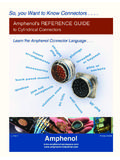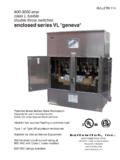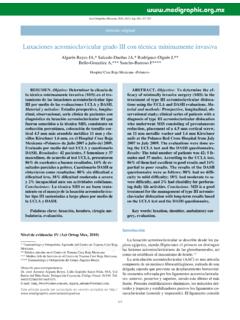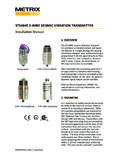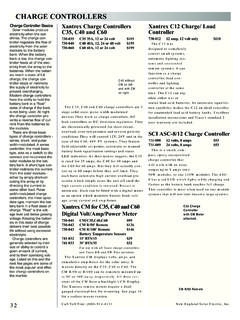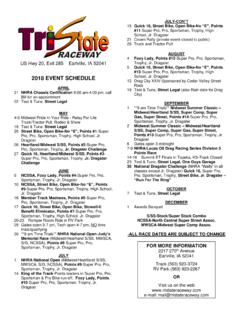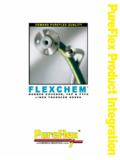Transcription of 206289 BloodProtocol v010 - Tribioscience
1 GeneAll ExgeneTM Protocols 1exgeneThis protocol handbook is included in :GeneAll ExgeneTM Blood SV mini (105-101, 105-152)GeneAll ExgeneTM Clinic SV mini (108-101, 108-152)GeneAll ExgeneTM Cell SV mini (106-101, 106-152)Visit or for FAQ, QnA and more contentsStorage ConditionQuality ControlSafety InformationIntroductionGeneral considerationsSample amount and expected yieldSample preparationsBlood and its derivativesCultured cellsTissueBacterial cellsYeast cellsGeneAll Blood/Cell/Clinic SV Kit ProceduresElutionGeneAll Exgene ProtocolsA. Protocol for Blood and Body fluid using B. Protocol for Buccal SwabC. Protocol for Saliva and MouthwashD. Protocol for HairE. Protocol for SpermF. Protocol for Blood and Body fluid using vacuumG. Protocol for Tissue H. Protocol for Paraffin-fixed TissueI. Protocol for Alcohol- or Formalin-fixed TissueJ. Protocol for Dried Blood SpotK. Protocol for Gram Negative BacteriaL. Protocol for Gram Positive BacteriaM.
2 Protocol for YeastTroubleshooting for Exgene Blood/Cell/Clinic SV miniOrdering InformationBrief mini protocol for whole blood and blood derivativesBrief mini protocol for tissue0405060709101112141519212223242731 323334353739424546 GeneAll ExgeneTM Blood/Clinic/Cell SV minifor Blood/Clinic/Cell SV minifor Clinic/Cell SV minifor Cell SV mini4 GeneAll ExgeneTM ProtocolsKIT CONTENTSB lood SV miniCell SV miniClinic SV miniGeneAll ExgeneTM mini SeriesCat. of preparationMini column type GCollection tubeBuffer CLBuffer BLBuffer BWBuffer TWBuffer AE*Proteinase K (20 mg/ml)**Protocol Handbook Cat. of preparationMini column type GCollection tubeBuffer GPBuffer YLBuffer CLBuffer BLBuffer BWBuffer TWBuffer AE*Proteinase K (20 mg/ml)**Protocol Handbook106-101mini10010030025 ml60 ml25 ml25 ml80 ml100 ml30 ml1106-152mini25025075060 ml125 ml60 ml60 ml200 ml250 ml60 ml1105-101mini100100300-25 ml80 ml100 ml30 ml1108-101mini10010030025 ml25 ml80 ml100 ml30 ml1105-152mini250250750-60 ml200 ml250 ml60 ml6 ml1108-152mini25025075060 ml60 ml200 ml250 ml60 ml1* 10mM Tris-HCl, pH , EDTA** After reconstitution of proteinase K, store it 4 C or -20 C GeneAll ExgeneTM Protocols 5 Storage ConditionAll components of GeneAll ExgeneTM series should be stored at room tempera-ture (15~25 C).
3 After reconstitution of Proteinase K with storage buffer, it should be stored under 4 C for conservation of activity. It can be stored at 4 C for 1 year without significant decrease in activity. But for prolonged preservation of activity, storage under -20 C is shipment or storage under cold ambient condition, a precipitate can be formed in buffer BL or CL. Heat the bottle at 56 C to dissolve completely in such a case. Using precipitated buffers will lead to poor DNA recovery. GeneAll ExgeneTM series are guaranteed until the expiration date printed on the product ControlAll components in GeneAll ExgeneTM series are manufactured in strictly clean condition, and its degree of cleanness is monitored periodically. Restriction enzyme assay, PCR amplification assay and spectrophotometric assay as quality control are carried out from lot to lot thoroughly, and only the qualified is approved to be InformationThe buffers included in GeneAll ExgeneTM series contain irritant which is harmful when in contact with skin or eyes, or when inhaled or swallowed.
4 Care should be taken during handling. Always wear gloves and eye protector, and follow standard safety BL contains chaotropes. It can form highly reactive compounds when com-bined with bleach. Do NOT add bleach or acidic solutions directly to the sample-preparation GeneAll ExgeneTM ProtocolsGeneAll ExgeneTM Blood/Clinic/Cell SV miniIntroductionGeneAll ExgeneTM series including Blood, Clinic, and Cell SV kit provide fast and easy methods for the small scale purification of total DNA from various sample spe-cies, such as blood, tissues, bacterial or cultured cells, and forensic specimens. Puri-fied DNA can be used directly for PCR, Southern blotting, and other downstream applications. GeneAll ExgeneTM series utilize the advanced silica-binding technology to purify total DNA sufficiently pure for many applications. Various samples are lysed in op-timized buffer containing detergents and lytic enzyme. Under high salt condition, DNA in the lysate bind to silica membrane and impurities pass through membrane into a collection tube.
5 The membranes are washed with a series of alcohol-con-taining buffer to remove any traces of proteins, cellular debris and salts. Finally pure DNA is released into a clean collection tube with deionized water or low ionic strength buffer. This protocol can be used with: GeneAll ExgeneTM Blood SV mini (105-101/105-152)Fresh or frozen blood, body fluid, nucleated blood, lymphocyte, cultured cells, buccal swab, saliva, hair, sperm and etc. GeneAll ExgeneTM Clinic SV mini (108-101/108-152)(In addition to Blood SV s) Fresh, frozen or fixed animal tissue, dried blood spot, gram-negative bacteria and etc. GeneAll ExgeneTM Cell SV mini (107-101/107-152)(In addition to Clinic SV s) Gram positive bacteria, yeast and etc. GeneAll ExgeneTM Protocols 7 General considerationSample amount and expected yieldGeneAll ExgeneTM series is designed for preparation from small amount of starting sample. Starting amount should not be exceed the recommended maximum limit, otherwise DNA recover will be significantly lowered.
6 ( ) Recommended amount of starting sample and the yield is listed on next page. For samples with very high DNA contents ( , buffy coat, spleen, which has a high cell density, and cell lines with a high degree of ploidy), less than the recommended amount of sample should be used. If your starting material is not listed or you have no information about your sample, we recommend you start with smaller sample than the listed and increase the sample size in subsequent preparation depending on the 1 The amount of starting sample should not be exceed the recommended maximum limit, otherwise DNA recover will be sig-nificantly low. If the cell mass of starting material is high ( , spleen, actual yield 1), maximum capacity will be lowered. (Maximum 1)Amount of starting materialDNA yieldMaximum 1( Spleen)Maximum 2( Liver)Expected yield AExpected yield BActual yield 2 Actual yield 18 GeneAll ExgeneTM ProtocolsThe DNA yield from whole blood will depend on the number of white blood cells (WBCs, leukocytes) included in the sample.
7 The number of WBCs varies from sam-ple to sample, and can be determined using hematocytometer or other cell counter before experiment. This kit can be used to extract total DNA from blood containing as little as x 105 leukocytes per milliliter and up to 1 x 107 cells per , the density of bacterial cells can not be easily determined, because its optical density is influenced by various factors, such as species, media and measuring devices. Rough guide may be helpful with the bacterial cells. A600=1 corresponds to 1 x 109 cells per milliliter with For yeast, A600=1 is obtained with a cell density of 1~2 x 107 cells per preparation of DNA from larger size of starting materials than the recommended above, we recommend GeneAll ExgeneTM Midi or MAXI series which is capable of processing the larger samples; On average, 4 times (Midi) and 10 times (MAXI) to mini series . (See ordering information at page 42)Table 1 The yield on this table is calculated by addition of each eluate of 3 successive elution steps after DNA preparation with RNase A treatment.
8 Without RNase A treatment, average yield from some sample may be significantly different from this bloodBuffy coatNucleated bloodCultured cells or lymphocytesBrainHeartKidneyLiverLungPanc reasSpleenBacteriaYeastStarting amount(max. capacity)200 ul200 ul10 ul5 x 10620 mg20 mg20 mg20 mg20 mg20 mg10 mg2 x 1095 x 107 Yield (ug)3-1220-405-1614-255-184-1015-3515-35 4-108-2510-355-2510-25 GeneAll ExgeneTM Protocols 9 Sample preparationThe yield and purity of DNA can be varied depending on the methods for harvest-ing and/or storing the starting sample materials. Freshly harvested sample should be used or stored immediately for best result. Note that the sample should be handled on ice as quickly as possible and repeated freezing and thawing of frozen sample should be avoided. Blood and its derivativesBlood sample should be used or stored immediately after collected to the tubes containing the anticoagulants and the preservatives for whole blood.
9 Whole blood collected in anticoagulants, such as EDTA or citrates (CPDs and ACDs), can be stored for several days at 4 C and at least for 2 years at -80 C without significant change in its properties. EDTA, a metal chelator, is an inhibitor against metal-dependent nuclease and is most preferable anticoagulant for DNA preparation. Heparin can also be used as anticoagulant but is not usually used because it acts as an inhibitor in PCR reaction. Frozen blood should be thawed quickly in 37 C water bath and kept on ice before use. The derivatives, such as plasma, serum or buffy coat, can also be used for specific application. Buffy coat can be used for higher yield of DNA and is prepared by col-lecting the intermediate phase after the centrifugation of whole blood. 150~250 ul of buffy coat can be collected from 3 ml of whole blood, but the concentration of leukocytes should be determined because overload of leukocyte will lead to poor result.
10 If the number of leukocytes exceeds 5 x 106, DNA recovery will be signifi-cantly cellsCultured cells growing in suspension can be easily harvested by centrifugation. However attached cells should be treated with trypsin-EDTA for detaching the cells before harvesting. The number of cells should be determined using a hematocytom-eter or other cell counter, and should not be over 5 x 106 per prep. Harvested cells washed with phosphate buffered saline (PBS) can be used directly in DNA prepara-tion or stored at -20 C or -80 C in pellet. It is not recommended washing the fixed cells with PBS, because it can cause cell lysis and significant reduce in DNA yield. Sample should always be kept on ice before GeneAll ExgeneTM ProtocolsTissueHarvested tissues should be used freshly or stored at very low temperature as quickly as possible. Generally, to make the sample finer will lead to not only better result, but also economy of experiment-time.


